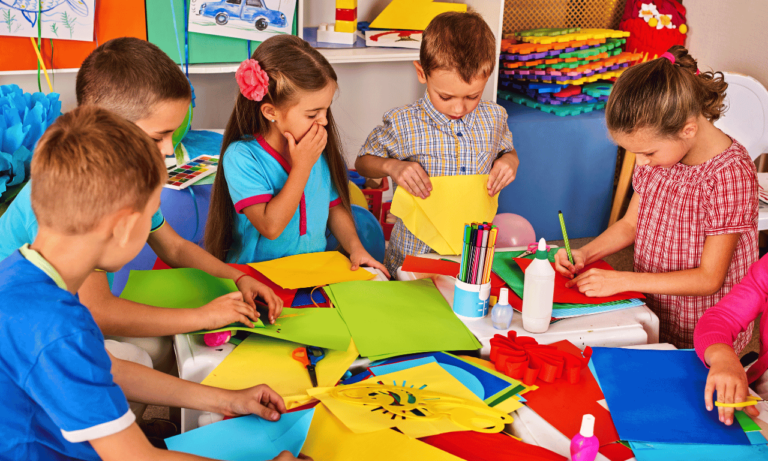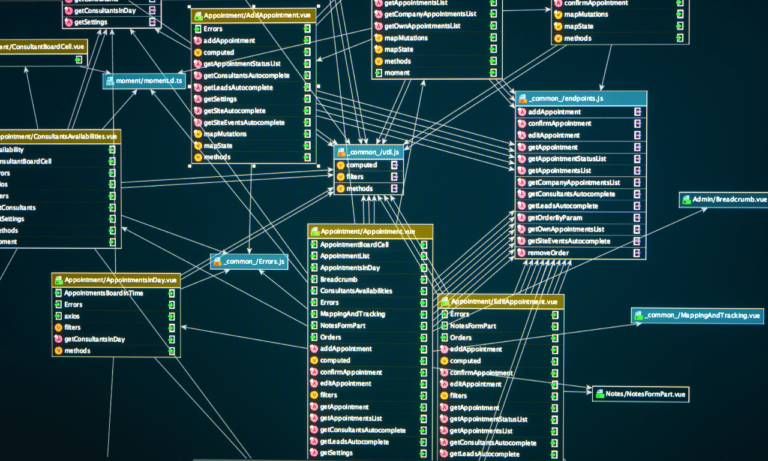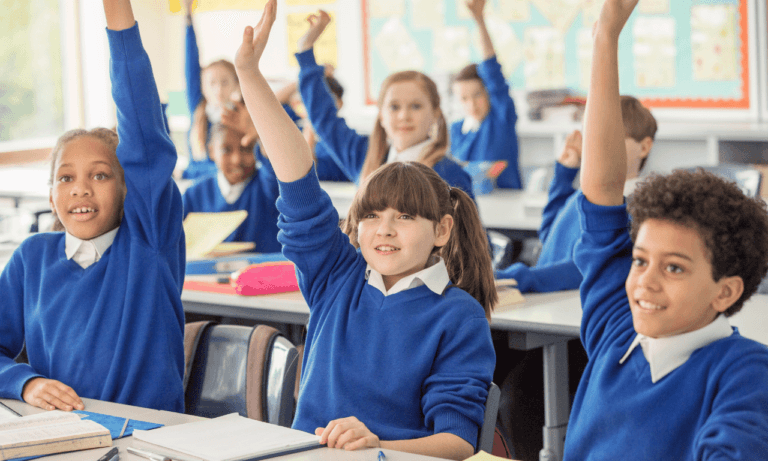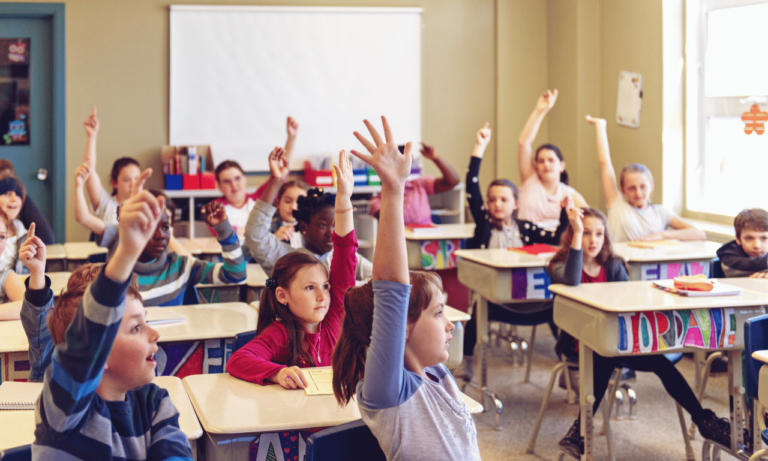Phone:
(+65)8319-0742
At the heart of a truly interactive and thought-provoking classroom lies the art of Strategic Questioning in Teaching. It’s an intricate dance where educators lead with carefully choreographed questions, prompting students to follow through with answers that showcase their understanding and analytical prowess. This method is a cornerstone of teacher questioning techniques, aimed at not only imparting knowledge but also enhancing student engagement through questioning. Deliberate preparation of these questions is not just an afterthought; it’s a pedagogical imperative that sets the stage for a dynamic learning experience.
Employing these strategies means teachers can draw out the full spectrum of student potential. From the depths of day-to-day comprehension to the peaks of critical thinking, strategic questioning turns the gears of young minds, compelling them to connect the dots and paint the bigger picture of their educational journey. It’s in this space that engagement morphs from a buzzword into a tangible reality, where students lean into their learning with curiosity and zest.
Subtle in its application yet profound in its impact, this technique shapes the classroom into a fertile ground for intellectual exploration. It lays down the pillars on which students can construct not just their answers, but their very pathways to lifelong learning and success.
Key Takeaways
- Strategic questioning fosters an interactive and analytical classroom environment.
- Teacher questioning techniques are crucial for maximizing student engagement.
- Well-prepared questions increase student participation and bolster critical thinking.
- Engaging students through questioning turns learning into an active, rather than passive, experience.
- Effective questioning leads to a richer understanding of subject matter and enhances cognitive skills.
The Importance of Questioning in the Learning Process
Within educational environments, the presence of strategic questioning is key to unlocking the potential of each student. Skillful educators harness the power of effective questioning techniques to lead learners beyond mere surface understanding, fostering a deeper intellectual curiosity and critical analysis.
The Role of Questions in Student Engagement
Student engagement reaches new heights when educators apply classroom questioning strategies that challenge learners to engage actively with the material. Gone are the days of rote memorization and passive learning; today’s classroom is alive with the buzz of inquiry and discourse, anchored by thoughtfully crafted questions designed to stimulate the mind.
Questions that Encourage Inquiry-Based Learning
Diving into the depth of a subject is made possible when educators leverage questions as tools to encourage inquiry-based learning. Curiosity is piqued, and learners are propelled into an explorative state where each question is a stepping stone towards comprehensive understanding and personal academic ownership.
Impacts of Strategic Questioning on Critical Thinking
To cultivate a generation of critical thinkers, the use of strategic questioning techniques is essential. When learners are met with questions that require rigorous thought and introspection, they begin to see the power of critical thinking through questioning, which ultimately shapes not only their education but their lifelong learning abilities.
| Questioning Technique | Engagement Impact | Thinking Skill Enhanced |
|---|---|---|
| Recall-Based Questions | Assesses Knowledge | Remembering |
| Probing Questions | Invites Explanation | Understanding |
| Reflective Questions | Promotes Self-Assessment | Analyzing |
| Hypothetical Questions | Encourages Creative Thinking | Creating |
| Socratic Questions | Fosters Dialogue and Debate | Evaluating |
The journey through educational questioning extends well beyond mere answersâit is, fundamentally, about harnessing the enthusiasm of learners and leading them towards an ever-expanding horizon of knowledge and critical insight.
Preparing Questions for Maximum Impact

When it comes to planning questions for educational sessions, it is essential to align them with the objectives of the lesson to ensure they stimulate inquiry-based learning and encourage deep, reflective thought. Questions designed with the session’s goals in mind are more likely to provoke a richer dialogue and retain the attention of students. Crafting a script with main questions ordered logically, educators familiarize themselves with the discussion trajectory, paving the way for a coherent exchange of ideas.
Classroom dynamics transform when educators anticipate the variety of answers to open-ended promptsâaccounting for the nuances of student thought processes enriches the engagement. Furthermore, by anticipating potential student misconceptions, instructors can prepare targeted follow-up queries or clarifications to maintain an effective learning trajectory. True impact comes not only from the questions themselves but from the ability of the teacher to navigate the responses, adapting to the diverse intellectual landscape of the classroom.
Below is a table outlining key aspects of question preparation that contributes to classroom questioning strategies for maximum pedagogical impact:
| Aspect of Preparation | Details | Impact on Learning |
|---|---|---|
| Aligning with Session Goals | Selecting content that reflects the desired learning outcomes for the session | Ensures that responses contribute constructively towards the session’s educational objectives |
| Type of Response | Deciding on open vs closed questions based on the depth of response desired | Facilitates a range from factual recall to deeper analytical thinking |
| Logical Sequencing | Organizing questions from general to specific or lower to higher-order thinking | Maintains focus and systematically builds complexity in the dialogue |
| Flexibility of Questions | Preparing a mix of structured and more adaptable questions accommodating varied thought processes | Adapts to the dynamic classroom environment, allowing more comprehensive engagement |
| Anticipation of Responses | Planning for potential student answers, including common misconceptions | Enables the teacher to guide the conversation thoughtfully and address learning gaps |
Integrating these strategies into the preparation phase of classroom questioning strategies not only solidifies the foundation for successful teaching but also fosters an environment ripe for inquiry-based learning. An educator’s foresight in planning questions plays a definitive role in the cognitive development of their students, guiding them through a journey of discovery and understanding.
Strategies for Crafting Effective Classroom Questions

Mastering question formulation strategies is a pivotal skill for educators seeking to enhance learning and understanding within their classroom. By weaving in essential concepts from Bloom’s Taxonomy to the art of Socratic questioning in teaching, teachers can create a dynamic environment that not only fosters engagement but encourages deep thinking and exploration. A well-crafted question can catalyze discussion, uncover new insights, and challenge students to extend their learning beyond the textbook.
Using Bloom's Taxonomy to Formulate Questions
Utilizing Bloom’s Taxonomy in the development of questions allows for a structured approach that anchors questions across a range of cognitive levels. This scaffolding aids students in moving from simple recall to more sophisticated levels of thinking such as application, analysis, and evaluation. Teachers leveraging this taxonomy guide learners progressively, facilitating a deeper comprehension and mastery of material.
Open-Ended vs. Closed Questions: When to Use Each
The dynamic of a classroom discussion can be significantly influenced by the type of questions posed. Open-ended questions in the classroom, characterized by their exploratory nature, invite students to think critically and articulate responses that reflect their reasoning and creativity. Conversely, closed questions can serve effectively as diagnostic tools for assessing students’ immediate knowledge and understanding.
Aligning Questions with Instructional Goals
Intentionality is key when crafting questions. Each question should be deliberately aligned with instructional goals to ensure that every query propels students toward the desired learning outcome. Whether the objective is to review previously acquired knowledge, introduce a new concept, or encourage analytical thinking, the alignment of questions with educational objectives serves as a roadmap to constructive and meaningful learning experiences.
| Type of Question | Usage | Example | Outcome |
|---|---|---|---|
| Closed | Assess prior knowledge | What is the capital of France? | Immediate knowledge recall |
| Open-Ended | Encourage exploration | How might environmental policies impact economic growth? | Invokes critical thinking and analysis |
| Socratic | Stimulate self-reflection and deeper inquiry | What assumptions underlie your argument? | Prompts self-examination and insight |
Equipping students with the capability to navigate through varying levels of complexity within questions is a testament to the efficacy of Socratic questioning in teaching. Through these methods, instructors can better facilitate an engaging learning environment where students actively climb the ladder of cognitive development, fostering both personal and academic growth.
Strategic Questioning in Teaching

In the realm of education, teacher questioning techniques are not just about seeking answers but about inspiring a deeper level of thought and understanding. Engaging students through probing questions in education requires a nuanced approach that considers the timing, phrasing, and purpose behind each query. This article section delves into how teachers can harness effective questioning techniques to enhance learning.
One of the key aspects of strategic questioning is ensuring that the questions posed align with educational objectives. Thoughtful planning and consideration of the cognitive level of questions will ensure that they are both challenging and accessible to students. The use of established frameworks can provide a structured way to explore topics through various lenses and encourage active participation.
Here’s a closer look at how different questioning frameworks can be leveraged by educators:
| Framework | Focus | Question Types |
|---|---|---|
| De Bono’s Six Thinking Hats | Different perspectives | Information, emotions, discernment, optimistic response, creativity, and thinking process |
| Wiederhold’s Question Matrix | Comprehensive questioning | Questions that explore: who, what, when, where, why, which, how, and if |
| Tony Ryan’s Thinker’s Keys | Creative & critical thinking | Reverse, what if, disadvantages, combinations, and other problem-solving prompts |
The adoption of probing questions in education not only stretches a student’s thinking but also serves as a tool for teachers to gauge understanding and uncover misconceptions. A well-crafted question can thus become a springboard for exploration, discussion, and discovery.
Ultimately, the use of effective questioning techniques is invaluable for cultivating an environment where learning is interactive, reflective, and progressive. Strategic questioning in teaching is about creating a dialogue that encourages students to construct knowledge themselves, leading to a more meaningful and engaging education.
Techniques for Soliciting Productive Student Responses
Adopting effective classroom response techniques is an integral component in modern educational practices. These techniques not only promote better engagement but also hone the skills necessary for students to thrive in an increasingly complex information landscape.
Encouraging Student Participation Through Questioning
Encouraging student participation in the learning process is no small feat. By providing a supportive environment where every answer, regardless of its accuracy, is valued as a step towards understanding, educators can significantly boost student confidence. Probing questions in education serve as gentle prompts that encourage learners to reflect and expand on their ideas, driving them to actively participate and delve deeper into the subject matter.
Adjust and Refocus Techniques for Clarifying Responses
A vital approach to understanding and assessing student knowledge is through the employment of adjust and refocus techniques. These allow educators to clarify student responses and ensure that discussions stay on track. By gently guiding students back to the core topic, misunderstandings can be rectified, and the entire class can be led towards an enriched comprehension of the subject.
Probing Strategies to Deepen Understanding
The deployment of probing questions in education is a strategic way to challenge students and advance their critical thinking skills. Teachers who master probing techniques can extract not only more detailed responses but also encourage students to reason and justify their thoughts. This, in turn, fosters a learning environment ripe for collaboration, analytical thinking, and profound understanding.
Questioning as a Tool for Formative Assessment
Within the realm of education, formative assessment through questioning plays a critical role in facilitating continuous insight into student learning progress. The skillful implementation of probing inquiry not only assesses comprehension but serves as a compass, steering the pedagogical direction to meet the needs of each individual learner.
Measuring Comprehension with Strategic Questions
Teachers leverage this technique as a means of measuring student comprehension, dynamically adjusting instructional methods to address gaps in knowledge or understanding. Questions crafted strategically resonate with the depth of the material and foster a nuanced perspective among students, thereby revealing the extent of their conceptual grasp.
Using Student Answers as Learning Opportunities
The crux of effective teaching lies in harnessing using student answers for teaching insights. Responses, particularly those stemming from open-ended questions, shine a light on reasoning skills and can be transformative if used astutely. Educators adept at transforming even the most incorrect answers into robust teaching moments cultivate an environment where risk-taking in learning is not only accepted but encouraged.
It is precisely these teaching insights that enable instructors to refine their approaches, ensuring that learning transcends the classroom and becomes a cornerstone of student cognitive development.
Socratic Questioning in Teaching Practices
Implementing Socratic questioning in teaching transforms the classroom into a dynamic space where dialogue fosters critical thinking through questioning. This method emphasizes not just finding answers, but exploring the depth and structure of ideas. In a Socratic dialogue, teachers guide the conversation with questions designed to challenge the studentsâ existing thought processes and stimulate new perspectives.
By enhancing student engagement through questioning, teachers encourage students to become more active participants in their learning journey. The Socratic method involves asking a series of questions to not only probe students’ understanding but also to illuminate the connections between their ideas and the broader themes of their studies.
Below are key practices for integrating Socratic questioning into your classroom:
- Encourage openness â foster an environment where students feel comfortable questioning their preconceptions.
- Promote reflection â guide students to consider the implications of their thoughts and words.
- Cultivate critical analysis â use questions that require students to support their opinions with evidence.
- Facilitate deeper understanding â ask students to explain the reasoning behind their ideas, promoting self-assessment.
- Foster intellectual independence â empower students to ask their own questions and seek answers autonomously.
For example, instead of asking students whether they agree with a certain viewpoint, a Socratic facilitator would ask them to explain the reasoning behind their stance, to compare and contrast it with alternative viewpoints, and to consider the implications if their view were universally accepted.
Ultimately, Socratic questioning is a relentless pursuit of the truth through persistent inquiry. It enables students to dissect complex ideas and synthesize their learning, which strengthens their understanding of the material and their reasoning abilities. The outcome is an intellectual resilience and agility that students carry forward into future challenges.
Conclusion
In summing up the discourse on Strategic Questioning in Teaching, it becomes evident that this technique is far more than a pedagogical choice; it is a pivotal tool that reshapes the educational landscape. By meticulously preparing, crafting, and presenting questions, educators have in their hands the power to transcend traditional teaching methods, achieving a dynamic and inclusive classroom. The direct impact of effective questioning techniques is seen in heightened student engagement and a discernible boost in critical thinking skills amongst learners.
The adoption of teacher questioning techniques tailored to provoke thought, foster inquiry-based learning, and harness student curiosity is instrumental in crafting a culture of deep intellectual exploration. A question, when strategically used, becomes the spark for piquing student interest and encouraging comprehensive understanding. Whether through inductive probing, exploration via open-ended questions, or the reflective nature of Socratic inquiry, every question posed is an invitation to students to engage, contemplate, and expand their horizons.
Ultimately, the goal is to facilitate a learning environment imbued with purposeful dialogue, where students feel seen and heard. Recognizing their input and responding positively is crucial for validating their efforts and promoting a supportive atmosphere where active participation is the norm. In conclusion, the deliberate and judicious application of strategic questioning solidifies its status as a cornerstone for modern teaching strategies that yield a more profound grasp of subjects and fortify lifelong metacognitive abilities. Thus, as educators fine-tune their questioning repertoire, they pave the way for generations of critical thinkers and engaged citizens.
FAQ
What is strategic questioning in teaching?
Strategic questioning in teaching is a method where teachers use carefully designed questions to enhance student engagement, encourage critical thinking, and foster inquiry-based learning. This technique helps to elevate the level of student interaction and promote a deeper understanding of the subject matter.
How does questioning affect student engagement?
Questioning can greatly affect student engagement by making learners active participants in their education. When students are asked thought-provoking questions, they are more likely to be interested and invested in the class discussion, which enhances their involvement and commitment to learning.
Why is inquiry-based learning important?
Inquiry-based learning is important because it encourages students to take ownership of their learning, promotes curiosity, and drives them to explore and discover information beyond the presented material. This approach helps students develop critical thinking and research skills, essential for lifelong learning.
Can strategic questioning improve critical thinking?
Yes, strategic questioning can significantly improve students’ critical thinking skills. By exposing them to higher-order questions that require analysis, evaluation, and synthesis, students are pushed to think more deeply and critically about subjects and concepts.
How should teachers prepare questions to maximize their impact?
Teachers should align their questions with clear learning objectives, craft them based on Bloom’s Taxonomy to target various cognitive levels, and organize them in a logical sequence. Preparing questions in advance and anticipating possible student responses can also help ensure that the questions have the intended impact.
When should teachers use open-ended vs. closed questions?
Open-ended questions should be used when the goal is to encourage deeper thought, reflection, and discussion. Closed questions are best for quick checks of comprehension or when a specific, concise answer is needed. Teachers should use each type of question strategically, depending on their teaching objectives.
How can questions be aligned with instructional goals?
Questions can be aligned with instructional goals by ensuring they are directly related to the lesson’s objectives and structured to guide students towards the intended learning outcomes. This requires a deep understanding of the material, the desired student responses, and the levels of Bloom’s Taxonomy being targeted.
What are some techniques for soliciting productive student responses?
Teachers can use various techniques to solicit productive responses, such as reinforcing positive answers, using probing questions for depth, and offering different viewpoints to encourage students to consider multiple perspectives. They can also use refocusing techniques to keep discussions on track and relevant to learning goals.
How does questioning serve as a formative assessment tool?
Questioning serves as a formative assessment tool by providing immediate feedback on student understanding. It enables teachers to adjust their teaching strategies and address misconceptions in real-time, ensuring students are on the right path to achieving the learning objectives.
What is the role of Socratic questioning in teaching practices?
Socratic questioning is used to challenge students’ assumptions, encourage self-reflection, and promote deeper learning. By asking thought-provoking questions, educators facilitate discussions that help students examine their beliefs and understanding, contributing to the development of their critical thinking skills.
Source Links
- https://citl.illinois.edu/citl-101/teaching-learning/resources/teaching-strategies/questioning-strategies
- https://www.niu.edu/citl/resources/guides/instructional-guide/questioning-strategies-to-engage-students.shtml
- https://edulearn2change.com/article-strategic-questioning-what-every-teacher-needs-to-boost-students-learning/

















